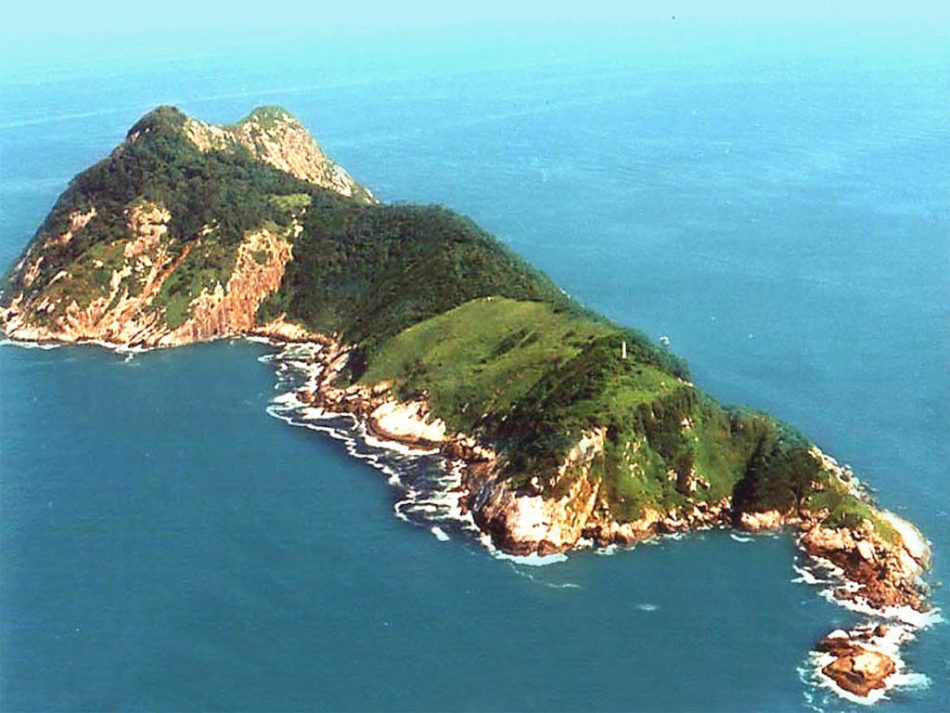Snake Island

For some people, the scariest place in the world, Snake Island. Picture: Unique Places.
This article was originally published on Morbid Planet on August 27, 2018.
Spiders are one of my biggest phobias and snakes come a close second. As a kid, my big brother used to throw spiders on me all the time so that explains that one; however, my fear of snakes, I could never quite figure out.
Years ago at a pet expo in Vancouver I forced myself to hold a small snake. I remember the little guy was bright orange and only about a foot long. It took everything in me to ask the vendor if I could hold one and he was more than happy to oblige. I stretched out my arm and he draped the snake on top of my hand. I took some deep breaths and told myself this wasn’t that bad. Now I could actually say I have held a snake!
After about 30 seconds, I was more than ready to hand him back. I looked around and the vendor had disappeared and I started to panic. I glanced down at the orange snake, now completely coiled around my hand and he had fallen asleep. I froze and didn’t want to disturb the snake. I waited until the vendor came back for him and it was the longest five minutes of my life. I told myself I would never to that again.
Based on this experience, you can imagine the fear I felt when I read about a place called “Snake Island.”
Snake Island is located off the coast of Brazil and is also known as Ilha da Queimada Grande. The island itself is only about one hundred acres, but that still leaves a lot of room for snakes.

The golden lancehead viper snake. Picture: Nayeryouakim/Wikkicommons.
This island is over populated with one particular type of snake, the Bothrops insularis. The common name for this type of snake is the golden lancehead viper. These creepy crawlies aren’t super big, they average a size of 28 to 46 inches in length. As you can see from the photo above, they are a yellow almost brown colour.
Only this type of snake lives on this island and it is extremely poisonous:
A bite from a golden lancehead carries a seven percent chance of death, and even with treatment, victims still have have a three percent chance of dying. The snake’s venom can cause kidney failure, necrosis of muscular tissue, brain hemorrhaging and intestinal bleeding.
It is hard to find an exact count of the population as all the sources that I checked supplied different numbers. I found reports of 2,000 up to 2,000,000.
According to Vice News, who was able to visit the island, quoted a population estimate of:
When you step ashore, with a keen eye you spot one of these snakes roughly every 10 to 15 minutes after clearing the base of the island, and as many as one every six square yards in other parts of the island.
I don’t know how big the island base is, but if we calculate the math on this one, one hundred acres converts to 484,000 squared yards. Then divide by six squared yards, we get a huge number of 80,666 snakes. This figure didn’t seem right so I did a little more digging.
According to Wikipedia:
The first systematic study of the population of the golden lancehead found the population to be 2,000 to 4,000, concentrated almost entirely in the rainforest area of the island. This might have happened because there was a limited amount of resources and the population became level, but in 2015 an estimate by a herpetologist on a Discovery Channel documentary stated that the population remains at 2,000 to 4,000 golden lanceheads.
The same article states that 62 acres of the island is rain forest. If we do our math again, 62 acres converts to 300,080 squared yards, which gives us a total of 50,013 snakes.
It sounds like no one can supply an exact count, but either way this tells us Snake Island has a whole lot of snakes on it and you don’t want to go there. Also, it won’t surprise you, the no humans live on this island either.
If you did want to visit, this isn’t a place where just anyone can stop by. The Brazilian government monitors the island and the only time anyone is permitted step foot on it, is when the Navy swoops in to check the single lighthouse on the island. There is no official docking area either and they have to make due by pulling up to a section of rocky shore.
Otherwise it is illegal to go there, but I am sure it doesn’t stop certain individuals. Apparently these poisonous snakes can fetch about $30,000 on the black market. Which is a big pay off for some people, if they don’t die from a snake bite in the process.
If you would like to see more information about Snake Island, check out this documentary from when Vice went there.
[su_youtube url=”https://youtu.be/kjaz0mynQvk” width=”940″ height=”460″]
[su_button url=”https://www.google.com/maps/place/Snake+Island/@-24.4845314,-46.6833181,15z/data=!3m1!4b1!4m5!3m4!1s0x94d1b776f04e34eb:0x59503abf3edf1075!8m2!3d-24.4879217!4d-46.6741555″ target=”blank” style=”flat” background=”#dd3333″ color=”#000000″ size=”13″ center=”yes”]Find this deathly destination now![/su_button]
Notes:
- 28 to 46 inches: https://en.wikipedia.org/wiki/Bothrops_insularis.
- extremely poisonous: Natasha Geiling, “This Terrifying Brazilian Island Has the Highest Concentration of Venomous Snakes Anywhere in the World,” The Smithsonian,
June 25, 2014, accessed August 15, 2018, https://www.smithsonianmag.com/science-nature/snake-infested-island-deadliest-place-brazil-180951782/. - Vice News: Vice Staff, Snake Island, Vice News, March 20, 2014, accessed August 24, 2018, https://www.vice.com/en_ca/article/8gdxm4/snake-island-part-1.
- Wikipedia: Wikipedia. “Ilha da Queimada Grande.” Last modified August 18, 2018.
https://en.wikipedia.org/wiki/Ilha_da_Queimada_Grande.

Leave a comment